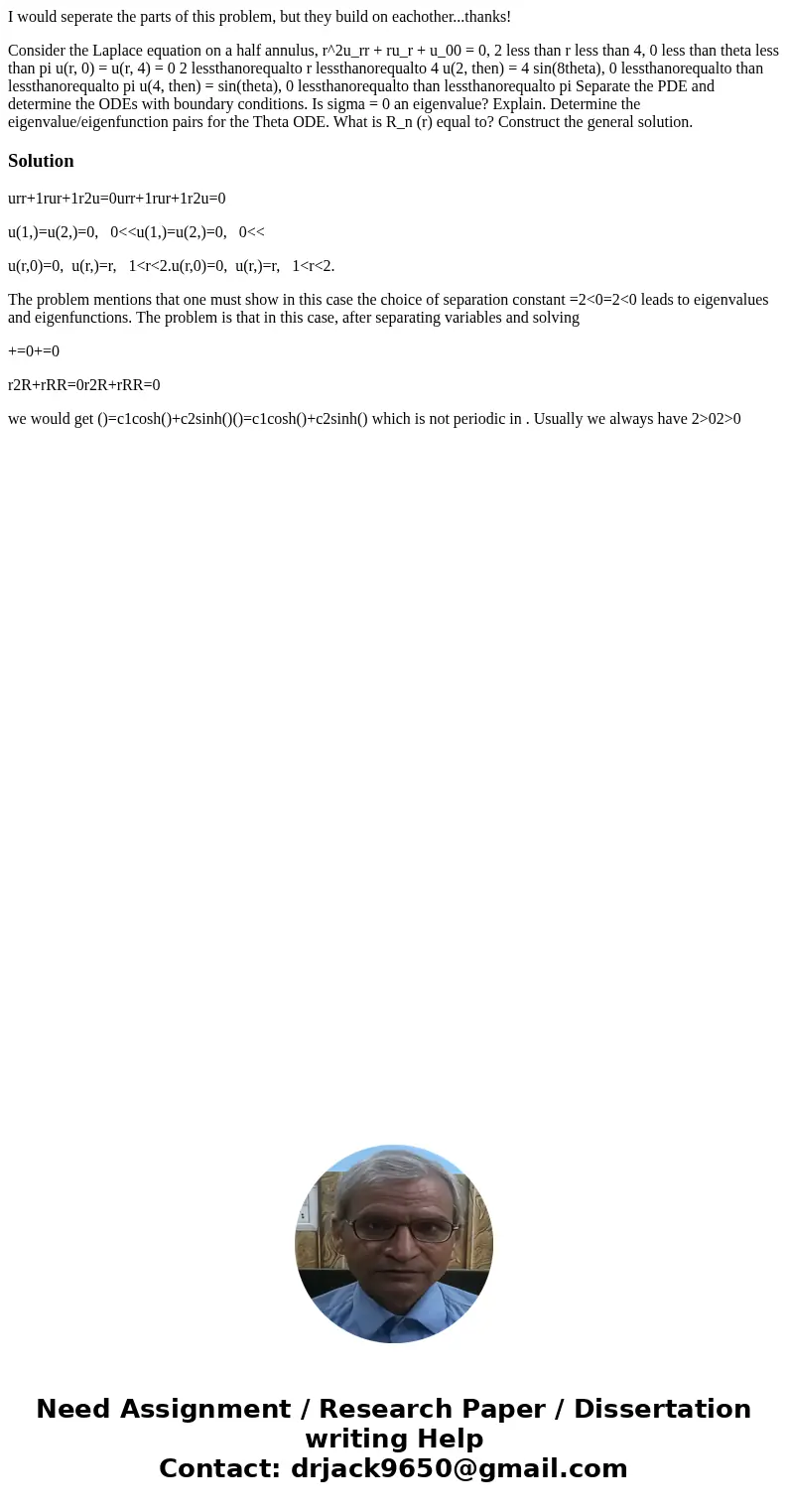I would seperate the parts of this problem but they build on
I would seperate the parts of this problem, but they build on eachother...thanks!
Consider the Laplace equation on a half annulus, r^2u_rr + ru_r + u_00 = 0, 2 less than r less than 4, 0 less than theta less than pi u(r, 0) = u(r, 4) = 0 2 lessthanorequalto r lessthanorequalto 4 u(2, then) = 4 sin(8theta), 0 lessthanorequalto than lessthanorequalto pi u(4, then) = sin(theta), 0 lessthanorequalto than lessthanorequalto pi Separate the PDE and determine the ODEs with boundary conditions. Is sigma = 0 an eigenvalue? Explain. Determine the eigenvalue/eigenfunction pairs for the Theta ODE. What is R_n (r) equal to? Construct the general solution.Solution
urr+1rur+1r2u=0urr+1rur+1r2u=0
u(1,)=u(2,)=0, 0<<u(1,)=u(2,)=0, 0<<
u(r,0)=0, u(r,)=r, 1<r<2.u(r,0)=0, u(r,)=r, 1<r<2.
The problem mentions that one must show in this case the choice of separation constant =2<0=2<0 leads to eigenvalues and eigenfunctions. The problem is that in this case, after separating variables and solving
+=0+=0
r2R+rRR=0r2R+rRR=0
we would get ()=c1cosh()+c2sinh()()=c1cosh()+c2sinh() which is not periodic in . Usually we always have 2>02>0

 Homework Sourse
Homework Sourse